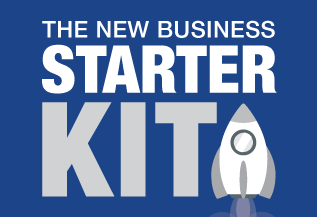Stabilise supply chain cash flow to survive rate rises
With supply chain uncertainty and rising cost, your cash flow forecasting could help manage the impact. Master your supply chain cash flow to make and reach business targets, and take the right amount of risk for your business.
A perfect storm of costs and risks
As market conditions and logistics challenges put global supply chains under immense pressure, interest rates are rising and inflation looms.
The cost of manufacturing in Australia is the highest of the world’s top 25 exporting nations; 30% more than the USA. The price of materials continues to creep up – particularly concrete, steel, timber and PVC-based products – compounded by record prices for raw materials like copper and iron ore.
These conditions — with rising inflation and interest rates — create a perfect storm of supply chain risk.
Many small businesses are saddled with record-high levels of debt thanks to funding their growth with ‘cheap money’ at low rates. Now, interest rates drive higher repayments, so there’s less cash on hand, and it’s tougher to secure more funding.
It’s never been more important to understand your cash flow
Know what to expect with your cash flow and the scenarios for rising interest rates and costs. Take a look at:
- Your cash flow position
- Managing your supply chain to minimise risk
- Assessing your suppliers and customers
- Surviving a cash flow crisis.
How to assess your cash flow position
Are you basing your cash flow management on gut feel, or your account balance on any given day? Knowledge is power. Regularly forecasting your cash flow means you’re making informed business decisions.
Timing is crucial, so keep inflow and outflow estimates accurate.
To forecast your cash flow:
- Forecast your monthly sales income. Look at last year’s figures to spot any trends. Keep in mind how quickly customers tend to pay, and economic factors like unemployment and interest rates.
- Estimate your cash inflows (sources of cash other than sales). Include funds from asset sales, GST rebates and tax refunds, and government grants.
- Estimate cash outflows and expenses. Include costs for operations, administration, new assets, loan repayments, bank fees and investments.
- Update your cash flow forecast. Start with actual cash on hand, add all the cash inflows, and deduct the cash outflows, for each month. The number at the end of each month is your closing cash balance — and your opening cash balance for the month ahead.
- Review estimated against actual. Compare your estimated versus actual cash flows each month. Look for errors or gaps, and adjust your forecast to match.
Get started with the ATO’s cash flow forecasting template.
Tools of the tradeBalance sheetIt pays to maintain an ongoing balance sheet — also known as a statement of financial position. It details your assets, liabilities and shareholder equity. It’s crucial for understanding your financial foundations and planning for both stormy economic conditions and for growth.
P&L
Your balance sheet and P&L paint a picture of business stability, profitability and operating health. [1] |
Managing your supply chain for healthy cash flow
Preparation makes for smarter supply chain management. Get on the front foot by identifying supply chain risks and making plans to manage
them as part of your overall business continuity plan (BCP).
Measure and manage your known risks over time – like supplier bankruptcy, a cybersecurity breach, or a raw material shortage. Then allow for
unknown risks which are unpredictable and beyond your control – like the weather or economic decisions.
Use all the information you have to minimise risk
- Revisit your budget. Interrogate actual and forecast expenses and look for opportunities to eliminate unnecessary costs.
- Consider offset accounts. Put your operating cash flow in an offset account that reduces loan interest without tying up your cash.
- Limit your use of debt. Keep an eye on interest rates and be prudent with debt. Consider putting off any new debt and paying down existing loans to keep interest under control.
-
Get proactive about scenario planning. Get expert eyes on your business financial forecasting.
Assessing your suppliers for risk
Consider your current contracts, terms and relationships.
- Create a supplier questionnaire to identify and assess potential risks before engaging with a new supplier.
- Revisit your payment terms with suppliers and customers — consider tightening terms or offering early payment discounts to avoid cash flow delays.
- Assess payment history and identify late-payers. Are they risking your cash flow? Is the revenue worth the risk?
- Consider minimum and maximum order quantities to control costs and encourage bulk orders.
Cash flow crisis? Act fast.
If you find yourself overwhelmed in a cash flow crisis, stay calm. Get the right support to steady the ship with a few simple actions.
- Accelerate your receivables. Ask new customers for an upfront deposit, send invoices earlier, follow up overdue accounts and offer early payment discounts.
- Renegotiate rates or ask to delay payments. Some vendors might not budge, but others might give you some leeway in a tight situation.
- Create debt payment plans. Buy your business some time with a debt payment plan to pay down loans in manageable chunks.
-
Get expert support. Cash flow management can be a steep learning curve. Reduce the overwhelm by talking to your
accountant about getting your cash flow on track.
Steady the ship
As inflation and interest rates force up costs, focus on what you can control: stay vigilant across Accounts Payable and Accounts Receivable and maintain an ongoing cash flow forecast. If you hit troubled waters – like an overdue debt or ATO payment – ask for a payment plan that keeps it moving.
Managing cash flow through choppy economic waters is simpler with trusted financial advice. Talk to your accountant or business advisor to
ensure you’re on an even keel.
Keep cash flow consistent with accurate forecasts. Plan for rising costs with expert advice.














